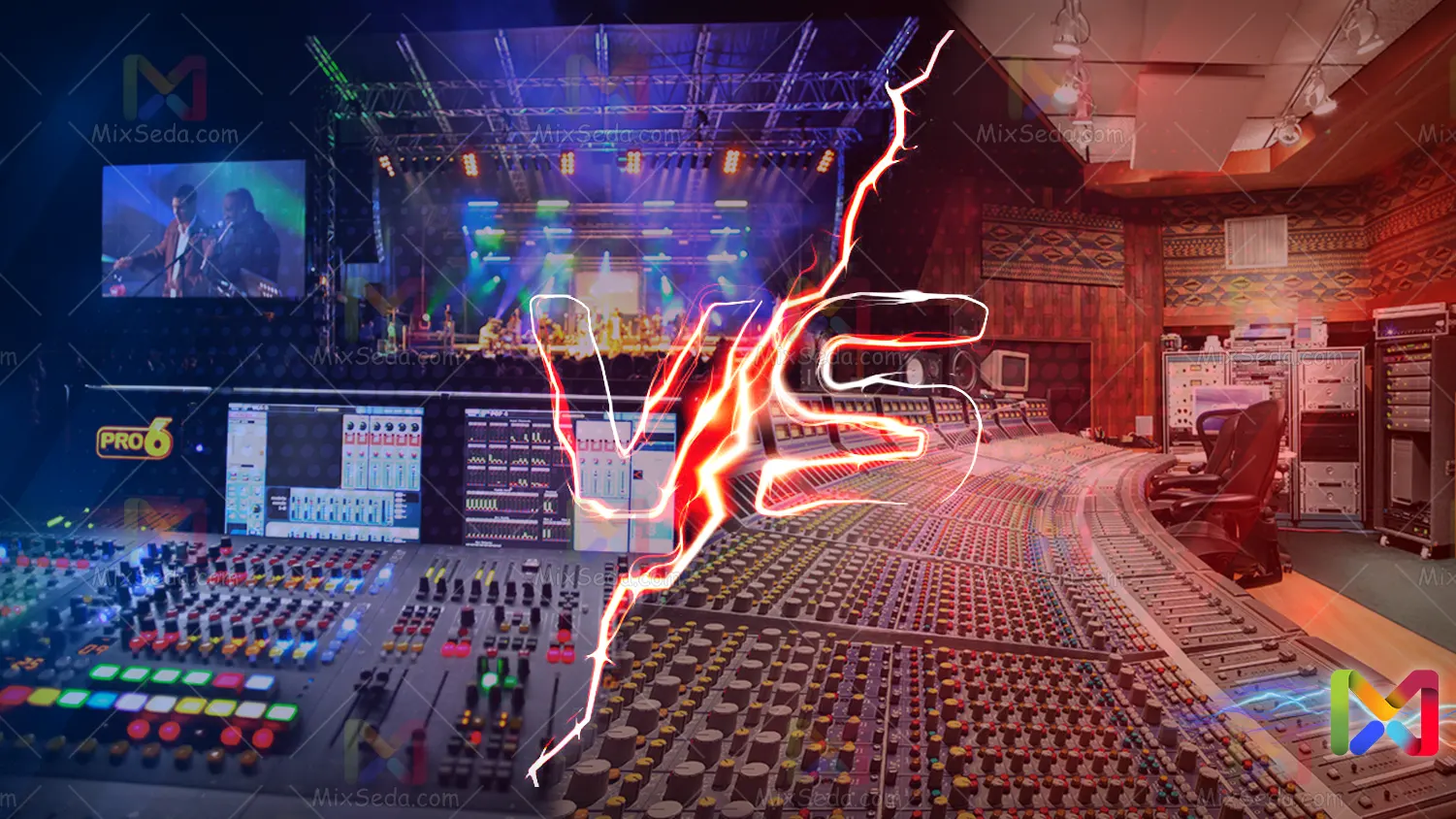
introduction
Comparison of digital and analog mixers: In the past, all mixers were analog. But after the introduction of digital mixers in the 1990s, the use of digital mixers has increased dramatically.
Digital mixers are more versatile than analog mixers. And they can have more performance. For example, they send a signal to a signal only with a button. In addition, digital mixers also offer signal processing capabilities.
Such as compressor, noise gate, reverb, automatic feedback eliminator, delay and…. Digital mixers also have the ability to install plug-ins. This allows them to be up to date and any plug-ins needed to shape and shape the sound can be installed on them.
On-screen digital mixers can easily show spectrum analyzers and other sound analyzers, while spectrum analyzers alone are an expensive device, and inexpensive examples don't show much accuracy and detail.
Digital mixers also have better settings for speaker management. Like crossovers with very steep slopes and power limiters. Digital processor signals can be automatically mixed for some simple tasks.
Consoles with motor starters can read or download power information.
Comparison of diffusion delay of digital and analog mixers
One of the advantages of analog mixers is their very high speed. It appears at the output as soon as the signal enters the circuit.
But digital mixers have inevitable amounts of delay. This speed can be as low as 1 millisecond or as low as 10 milliseconds, depending on how the Micro model works.
This low latency is not a problem for speakers which are for listeners or even monitors. But only on in-ear monitors, both on stage and in the studio, a singer or artist can hear her voice with a delay, which is a bit unpleasant.
Any analog to digital or digital to analog conversions in digital mixers will cause a delay. The inserts in these mixers to connect the effects to the basses of the mixer will double this delay.
Because the signal has to be converted twice, once from analog to digital, again to analog for effect and again from analog to digital for the bass mixer. It will also delay digital format converters, such as ADAT to AES3.
In a digital mixer, there can be different latency modes, depending on how busy the DSP is and how many interface buses we have used.
If we process a signal in two ways and each in different ways, the effect of the comb filter on the signals could occur. Some digital mixers have a combination of methods to correct and minimize latency.
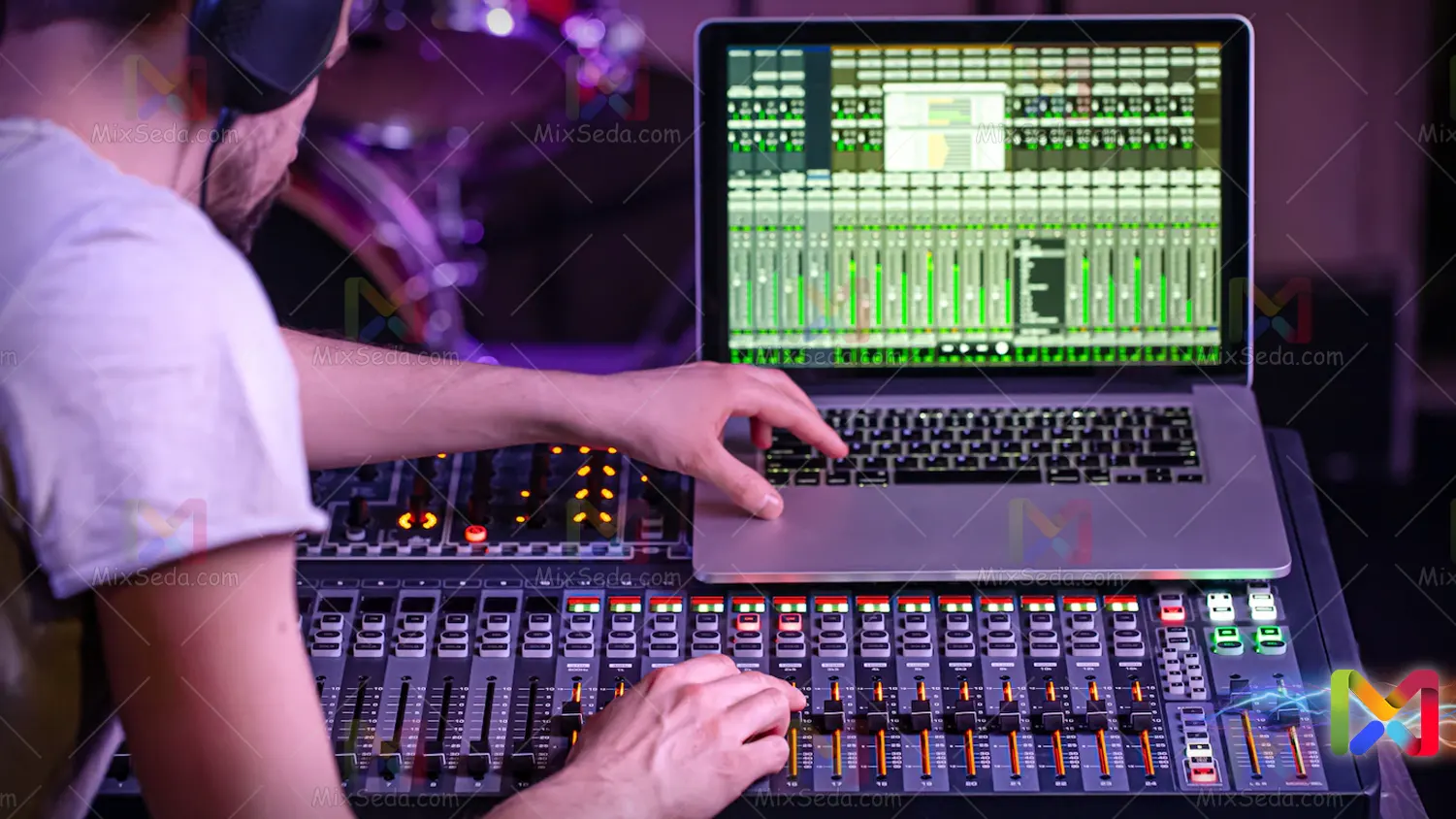
Comparison of the ease of use of digital and analog mixers
Analog mixers are still popular today and it is safe to say that they will no longer be obsolete. They have dedicated columns for signals, physical losses, switches and power supplies for each channel, which are logical and familiar to many people.
Analog mixers are physically very large, but you can quickly access any point and change parameters. Digital mixers greatly reduce physical space, but only if the user is able to adjust only one channel at a time.
Subsequently, digital mixers have virtual screens and are layered. Each of these virtual pages has a bank of power supplies to control a section, such as controlling AUX and equalizers.
This combination of levels can be confusing for some users as they do not have direct access to any of the required settings.
Comparison between digital and analog mixers
In analog mixers, the sound path can be better understood. Of course, digital mixers also have some conveniences. For example, to change a channel, you don't need to remove the connector, but you can easily assign any input to any channel you want.
On the other hand, digital mixers allow you to carry out the process of reading and modifying stored information in the simplest way. USB flash drives and other data storage devices are used to transfer previously stored data to a new location.
In the new location, the sound engineer easily feeds the information to the mixer and adjusts it quickly. And quickly prepares for the new program.
Some digital mixers allow you to edit the mix offline. For example, in a show, the sound engineer can quickly change the sound instead of the mixer on the laptop and play it at the same time, which speeds up some tasks.
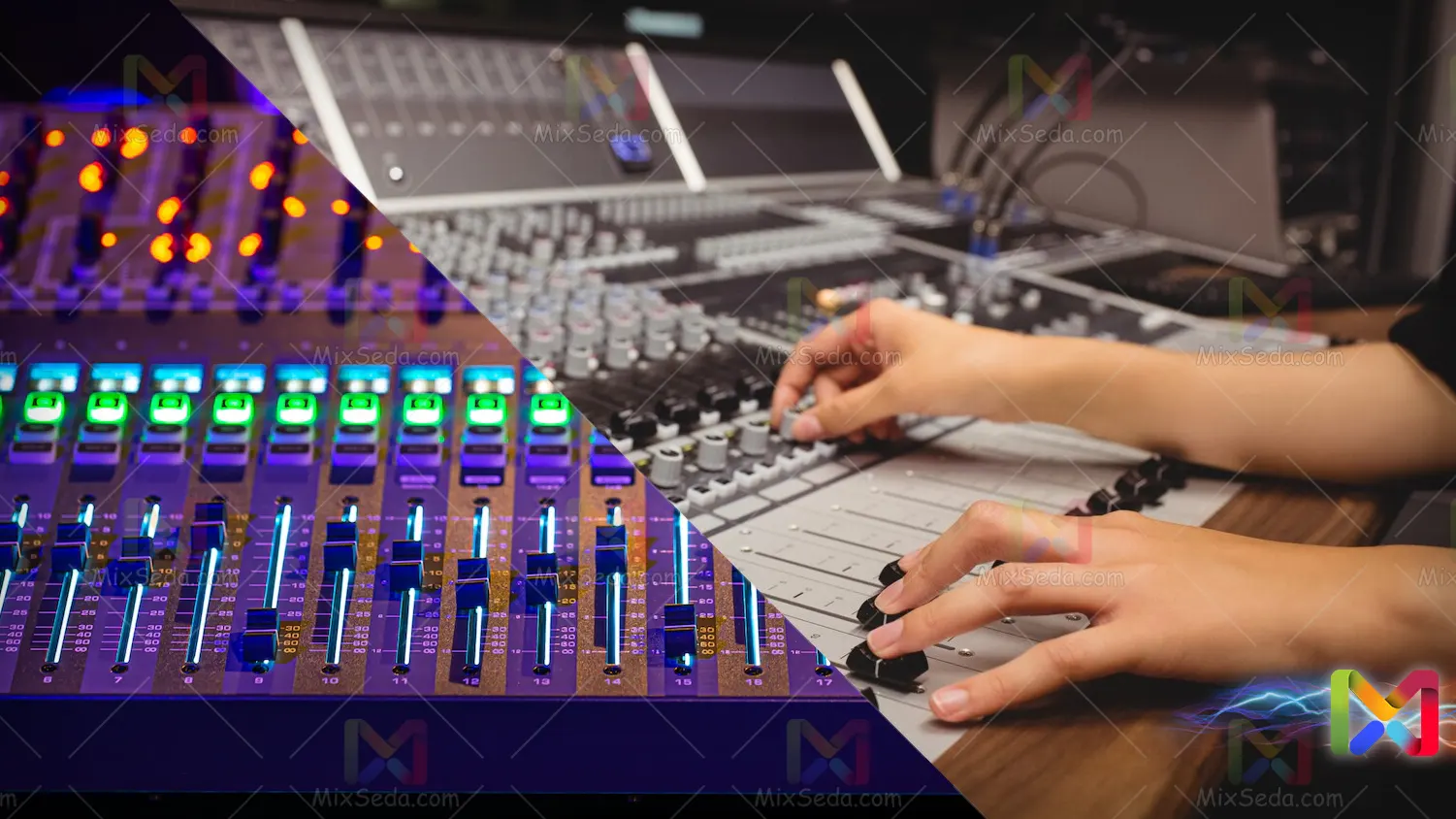
Comparison of the sound quality of digital and analog mixers
Both analog and digital mixers require analog preamps for the microphones. A high gain circuit that amplifies the weak microphone signal.
To the extent that it mixes with the working values of the mixer, so that the working point of both mixers is the same. In digital mixers, after the microphone amplifier, there is an analog-to-digital converter.
Ideally, this process is specifically designed to prevent clipping of the signal, particularly from the converter.
Audio signal processing
In digital mixers, signal processing and mixing is done with the best quality if there is no clipping or saturation in the circuits (especially the analog parts).
Also, in analog mixers, saturation of the microphone amplifier or interface bus circuits must be avoided. High frequency frequencies can always be present in analog mixers.
With proper mixer management, it can be reduced and unused channel power supplies and gain volumes can be completely closed. In analog mixers, even clear, unused subsets can cause hiss.
In digital mixers, this problem has been solved with noise gates. Digital circuits, however, are also more sensitive to disturbances such as radio and mobile frequencies. Noise can be eliminated with noise reduction circuits and equalizers.
In general, in terms of sound quality, it's hard to tell whether analog mixers are better or digital. Many professional engineers will answer this question by saying that the sound quality depends more on the microphone and speaker than on the mixer, because in both digital and analog, the sound quality is tried to be as high as possible.
But which one is best depends on the location used, the recording experience and the type (model) of the console.
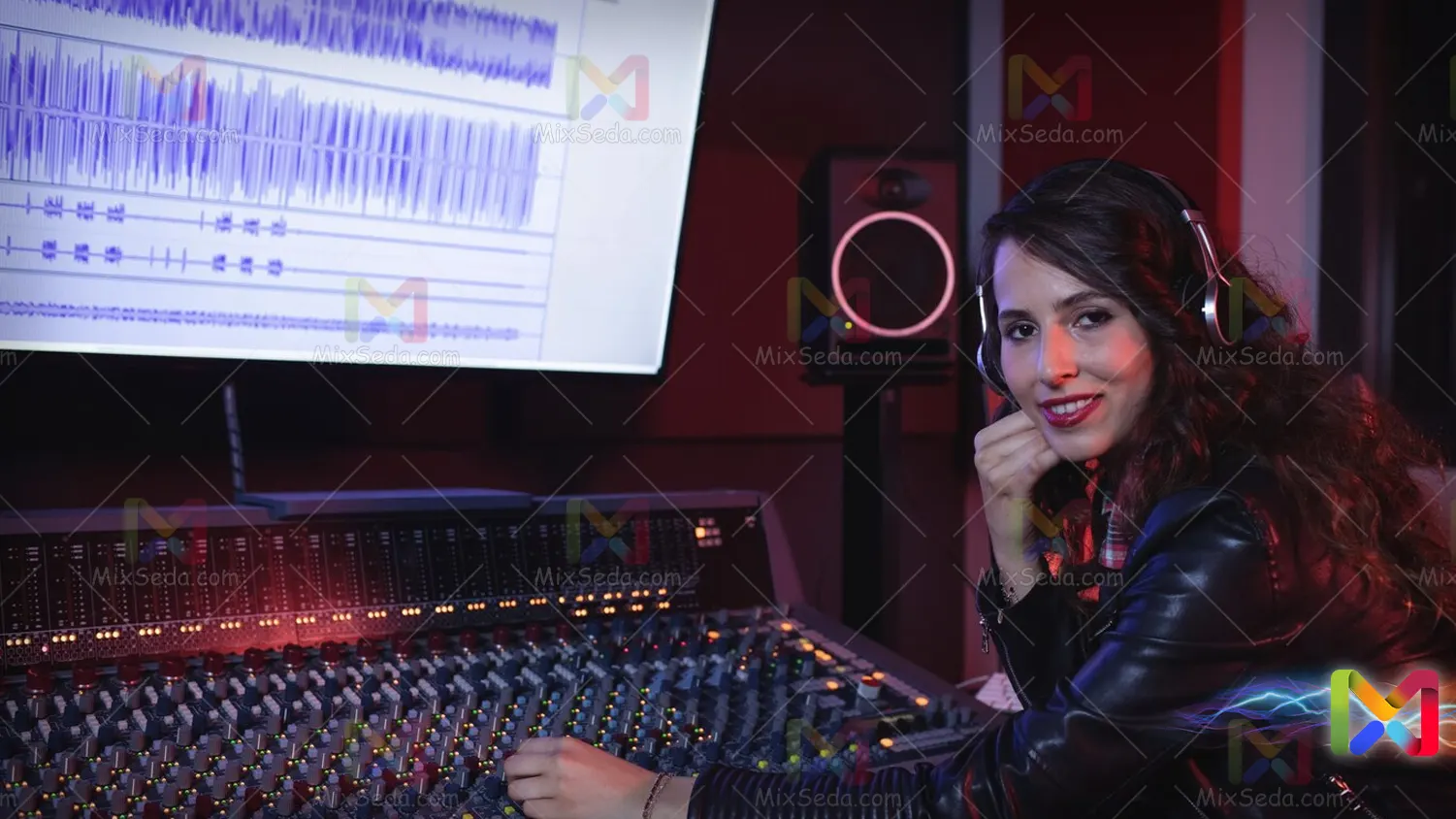
remote controller
In the past, analog mixers had the ability to use separate devices for processing tasks. But in other digital mixers, connecting other devices to the mixer is very popular. Now you can mix sounds from a computer, laptop, tablet and ...
Computer networks allow you to network and control remote devices from a computer. Of course this doesn't just apply to digital mixers, but to new active bands as well.
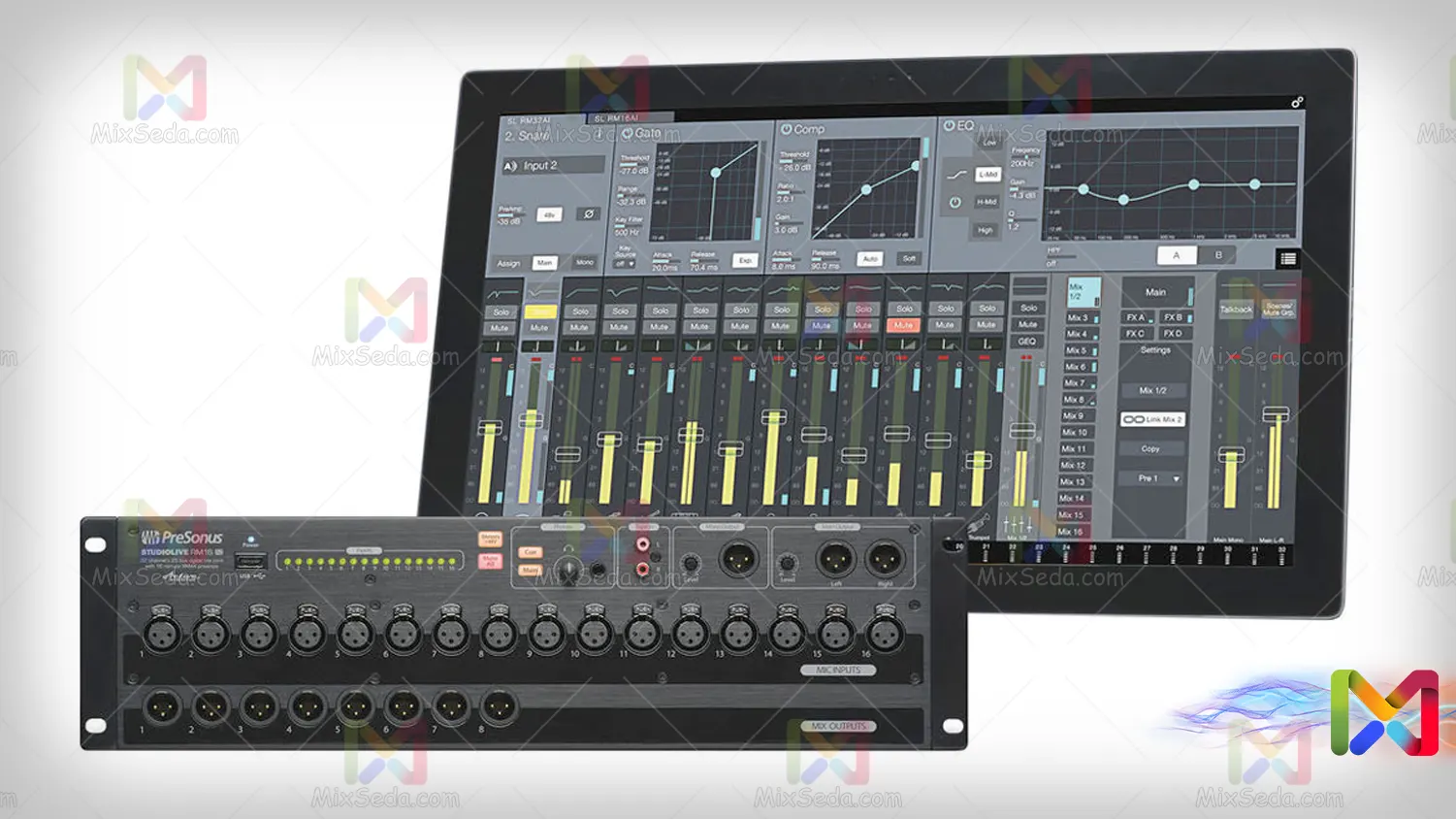
Popularity
There is a huge difference in price between digital and analog mixers. You can mix the sound using analog mixers at a much lower cost. On the other hand, analog mixers require less knowledge, and in the event of a breakdown, the repair of the device will cost less.
The cost of an audio mixer that works with a digital mixer is much higher than that of an audio mixer that works with an analog mixer. Also, creating an effect in a digital mixer is much more difficult than an analog mixer, because more variables and parameters are defined in digital mixers to adjust the effect.
Digital mixers require more care and can be easier to steal because they are more valuable. On the other hand, the plug-ins and software installed on some of these mixers need to be updated from time to time.
In light of all the cases I explained above, although digital mixers have more capabilities, analog mixers like Dynacord are more in demand in the Islamic Republic of Iran.
In terms of price in Iran, except for companies and large groups, other commercial organizations do not have the power to purchase and use digital mixers. Also, in many cases it is not necessary to spend a lot of money to buy a digital mixer and just have an analog mixer.
